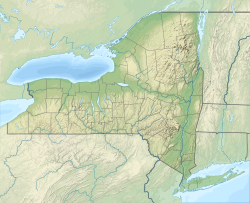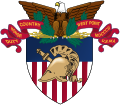| United States Military Academy Jewish Chapel | |
|---|---|
 West Point Jewish Chapel, in | |
| Religion | |
| Affiliation | Judaism |
| Rite | Unaffiliated |
| Ecclesiastical or organisational status | Synagogue and chapel |
| Status | Active |
| Location | |
| Location | West Point Cemetery, United States Military Academy, West Point, New York |
| Country | United States |
Location in New York | |
| Coordinates | 41°23′34″N73°57′45″W / 41.39278°N 73.96250°W |
| Architecture | |
| Founder | West Point Jewish Chapel Fund |
| Completed | 1984 |
| Website | |
| westpoint | |
The West Point Jewish Chapel is an unaffiliated Jewish congregation, synagogue, and chapel for United States Military Academy cadets and faculty and members of the community, located on the Academy's campus in West Point, New York, in the United States.
Contents
Construction began in 1982 and was completed on November 13, 1984, [1] it was the culmination of 20 years of effort on the part of the West Point Jewish Chapel Fund, a private nonprofit organization which raised more than US$7.5 million for its construction. [2]



